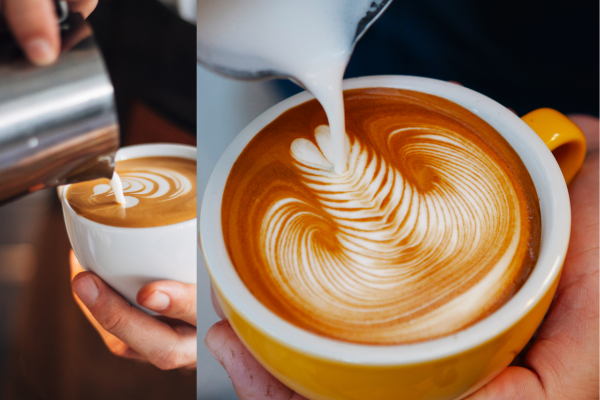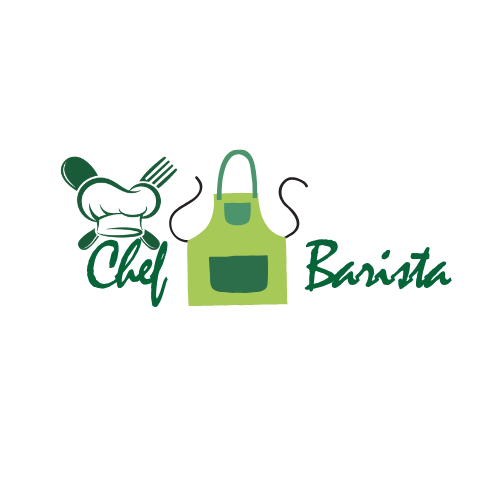A latte is the perfect marriage of espresso and milk, offering a creamy and smooth coffee experience. Loved for its versatility and mild flavor, the latte can be enjoyed plain or flavored, making it a popular choice for both coffee connoisseurs and those just beginning their coffee journey.
Table of Contents
Discovery of Latte
It is a short for “caffè latte,” which simply means “milk coffee” in Italian. While the concept of adding milk to coffee has existed for centuries, the modern latte as we know it started gaining popularity in Italy and the U.S. in the mid-20th century. Its roots are in the Italian breakfast tradition, but the addition of steamed and frothy milk set it apart, creating a balance of rich espresso and silky milk.
In coffee shops today, it has evolved into an art form, both in its taste and presentation, with baristas perfecting milk frothing techniques and the art.
Latte Recipe
Ingredients:
- 1 shot of espresso
- 3/4 cup of steamed milk
- A thin layer of frothed milk for topping
Instructions:
- Brew a shot of espresso using your preferred method.
- Steam the milk until it reaches about 150°F (65°C), creating a creamy texture.
- Froth a small portion of the milk to form a thin layer of foam.
- Pour the steamed milk over the espresso, holding back the foam.
- Spoon a thin layer of frothed milk on top.
- Optionally, you can add flavored syrups like vanilla, caramel, or hazelnut to customize your drink.
- Serve and enjoy!

How to Brew the Perfect Latte
To create a perfect drink, it’s all about balance. A strong, rich shot of espresso should be smoothed out by steamed milk with a velvety texture, while the foam on top adds a light, creamy finish.
- Espresso: Start with a high-quality espresso shot. The boldness of the coffee is what contrasts beautifully with the milk.
- Steamed Milk: Heat the milk to around 150°F (65°C). This creates a rich, smooth texture without scalding the milk. The milk should be dense and creamy.
- Frothing: Froth only a small portion of the milk to create a thin, silky foam to top your drink.
- Layering: Pour the steamed milk over the espresso, leaving a little room at the top for the froth.
Art has become a hallmark of the perfect drink. While not necessary for taste, a beautiful design in the foam adds an artistic touch and showcases the barista’s skill.
What Makes a Bad Latte?
A poorly made latte can be a letdown. Here are some common mistakes to avoid:
- Weak Espresso: Since the beverage contains more milk than espresso, a weak shot will leave the drink tasting overly milky and bland.
- Over-steamed Milk: Overheating the milk can result in a burnt flavor, making it taste sour or bitter.
- Too Much Foam: It should have just a thin layer of foam. Too much foam transforms it into more of a cappuccino, which has a different flavor balance.
Achieving the right balance between milk and espresso is essential. Too much milk can overpower the espresso, while too little can leave the drink too strong.
The Importance of Milk
Milk is the heart and soul of the latte and cappuccino. The type of milk you use plays a big role in the texture and taste. Whole milk will give you a rich, creamy drink, while skim or alternative milk options (like almond, oat, or soy) will alter the flavor and consistency.
Frothing is also key. The milk should be aerated to create a silky, smooth foam that sits delicately on top of the drink, but does not overwhelm the coffee. The foam acts as a finishing touch, adding texture and visual appeal.
Sugar
It is often enjoyed without sugar, but flavored syrups like vanilla, caramel, or hazelnut are popular additions. If you’re watching your sugar intake, be mindful of how much syrup you add. A small amount can go a long way in sweetening your drink.
Calories and Macros
| Nutrient | Amount per 8 oz (240 ml) Latte |
| Calories | 120-180 |
| Protein | 6-12 grams |
| Carbohydrates | 10-15 grams |
| Fat | 4-8 grams |
| Caffeine | 63 milligrams |
The calorie count can vary based on the type of milk and any added syrups. Whole milk will result in a richer, higher-calorie drink while using skim milk or plant-based options like almond or oat milk will lower the calorie content.
Interesting Facts about Latte
- Origin of the Name: The word “latte” comes from the Italian “caffè latte,” which means “milk coffee.”
- Versatility: It is incredibly versatile, with endless variations like iced, flavored, and seasonal favorites.
- Art: Skilled baristas can create intricate designs in the foam of a latte, turning your coffee into a piece of art.
- Coffee to Milk Ratio: It has more steamed milk than other espresso drinks, making them creamier and less strong than a cappuccino or macchiato.
Conclusion
Lattes have come a long way from their humble origins in Italy. Whether you prefer it plain or with a hint of sweetness from flavored syrups, it offers a smooth, comforting coffee experience that appeals to coffee lovers worldwide.
Next time you sip it, remember that it’s not just about the coffee, it’s about the balance of flavors and textures that create a truly enjoyable drink. Also, Learn more here.








